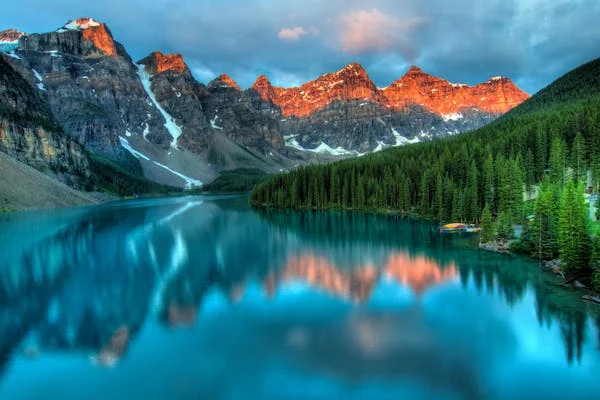Introduction
Mountain valleys are some of the most captivating features of Earth’s natural landscapes. These low-lying areas between mountain ranges offer a unique view of our planet’s geological history. As we delve into the world of mountain valleys, this article will provide an in-depth look into their formation, significance, and role in both nature and human society, drawing insights from prominent sources like Mountain Valleys NYT.
What Are Mountain Valleys?
Mountain valleys are natural depressions found between mountain peaks. These valleys are often formed over long periods through natural processes like erosion, glaciation, and tectonic shifts. The result is a diverse array of landscapes that range from fertile farmland to rugged wilderness.
The term “mountain valleys nyt” has become synonymous with both the natural beauty of these valleys and the importance they hold for ecosystems, agriculture, and human civilization. From the V-shaped valleys carved by rivers to the U-shaped valleys formed by glaciers, each type has a unique geological story to tell.
The Formation of Mountain Valleys
Mountain valleys come into existence through a variety of geological processes. Some of the most common ways these valleys form include:
1. River Erosion (V-Shaped Valleys)
Rivers play a major role in shaping mountain valleys NYT reports. Over thousands of years, rivers cut through rock and soil, deepening and widening the valley to create what is known as a V-shaped valley. These valleys are narrow and deep, with steep slopes on either side.
2. Glacial Erosion (U-Shaped Valleys)
In colder climates, glaciers carve out wide, flat-bottomed valleys, commonly referred to as U-shaped valleys. According to the Mountain Valleys NYT, glaciers have had a significant impact on mountain landscapes, especially in regions such as the Alps, where these valleys are particularly common.
3. Tectonic Forces and Faulting
Mountain valleys are also created by tectonic forces. As the Earth’s crust moves, fault lines may form and lower the land between mountains. These valleys are often irregular and may be shaped further by water and wind erosion.
4. Landslides and Rockfalls
While less common, landslides and rockfalls can also lead to the formation of valleys. The collapse of rock can result in the creation of a depression, which may later evolve into a valley as it is further eroded by water.
Types of Mountain Valleys
The geography of mountain valleys NYT highlights the different types of valleys based on their shape and formation:
1. V-Shaped Valleys
These valleys are primarily formed by the erosion of rivers, resulting in steep, narrow valley floors. As mentioned in several studies on mountain valleys NYT, V-shaped valleys are typically found in young mountain ranges where erosion continues to reshape the landscape.
2. U-Shaped Valleys
U-shaped valleys, created by glacial activity, are broader with flat bottoms. These valleys often have steep walls and are typically associated with older mountain ranges that were once covered by glaciers. The mountain valleys nyt coverage on the Swiss Alps gives an excellent example of U-shaped valleys, with some of the most iconic valleys like Lauterbrunnen showcasing this formation.
3. Hanging Valleys
A hanging valley is smaller and higher in elevation than the main valley. These valleys were often formed by tributary glaciers that did not erode as deeply as the main glacier. Hanging valleys are a key feature of many mountain valleys in NYT discussions, especially in places like Yosemite National Park.
4. Fault Valleys
These valleys form due to tectonic forces that create a fault line. Over time, the land on either side of the fault can drop, resulting in a valley. These valleys can vary in shape but are typically larger and more irregular than other types. Mountain valleys NYT mentions the Great Rift Valley in East Africa as one of the largest examples of fault valleys.
The Ecological and Societal Importance of Mountain Valleys
The ecological role of mountain valleys NYT is not just limited to their breathtaking landscapes; they are also critical to sustaining both natural ecosystems and human populations.
1. Habitat for Wildlife
Mountain valleys provide rich habitats for wildlife. The diverse range of ecosystems found in these valleys supports various animal and plant species, contributing to biological diversity. From alpine meadows to forested slopes, mountain valleys NYT often report the abundance of flora and fauna that call these valleys home.
2. Fertile Land for Agriculture
The fertile soil in mountain valleys makes them ideal for agriculture. Rivers, streams, and glaciers deposit nutrient-rich sediment in the valleys, creating fertile land for farming. For example, the valleys in the foothills of the Andes have been used for farming by indigenous peoples for centuries. Mountain valleys NYT frequently highlights how agriculture is practiced in these valleys and its importance to local economies.
3. Water Resources
Many of the world’s major rivers originate in mountain valleys, providing vital water resources for surrounding regions. These valleys collect snowmelt and rainfall, which flows into rivers and lakes, nourishing downstream areas. As mountain valleys NYT notes, these water systems are crucial for irrigation, drinking water, and hydropower generation.
The Role of Mountain Valleys in Human History
Throughout history, mountain valleys NYT have been significant sites for human settlement. Early human civilizations often flourished in these valleys due to their natural resources. The fertile land, ample water supply, and protection offered by the surrounding mountains made these valleys ideal for settlement.
Early Human Settlements
The first agricultural societies were often built in mountain valleys. For instance, ancient civilizations in the valleys between the Tigris and Euphrates rivers in Mesopotamia depended on the fertile soil for crop cultivation. Mountain valleys NYT articles on ancient civilizations often emphasize how valleys served as cradles of human development.
Modern Uses of Mountain Valleys
In modern times, mountain valleys NYT have continued to serve as hubs for agricultural production, tourism, and industry. Many valleys are home to hydroelectric dams, while others are thriving tourist destinations thanks to their scenic beauty. Ski resorts, hiking trails, and eco-tourism activities have made some mountain valleys world-famous.
Famous Mountain Valleys Around the World
Many famous mountain valleys NYT have become symbols of natural beauty and are featured as travel destinations in articles and journals.
1. Yosemite Valley (United States)
Located in California, Yosemite Valley is one of the most famous U-shaped valleys in the world. The valley was carved by glaciers during the last ice age and is now a popular tourist destination, known for its stunning views, waterfalls, and diverse wildlife. Mountain valleys NYT often feature Yosemite for its majestic granite cliffs and rich cultural history.
2. The Swiss Alps (Switzerland)
The valleys in the Swiss Alps are a prime example of U-shaped valleys formed by glaciers. Mountain valleys NYT provides extensive coverage of these valleys, particularly about tourism, agriculture, and environmental conservation.
3. The Andes (South America)
The Andes mountain range in South America is home to many V-shaped valleys formed by rivers. These valleys are vital for the agricultural practices of countries like Peru and Argentina. Mountain Valleys NYT highlights how the Andean valleys continue to support local communities through farming and tourism.
4. The Great Rift Valley (East Africa)
Spanning over 4,000 miles, the Great Rift Valley is one of the largest fault valleys in the world. It is rich in natural resources and biodiversity and is a major geological feature studied by scientists. Mountain valleys NYT reports often emphasize the Great Rift Valley’s ecological significance and role in the history of human evolution.
The Future of Mountain Valleys
As human activity continues to impact the environment, preserving mountain valleys has become a crucial issue. The pressures of climate change, agriculture, and tourism are challenging these landscapes, making it vital to ensure their protection.
1. Conservation Efforts
Efforts are being made globally to preserve mountain valleys through conservation initiatives. Mountain valleys NYT articles frequently highlight these efforts, such as creating protected national parks and working with local communities to maintain the ecological balance.
2. Sustainable Tourism
With the rise of eco-tourism, there is a growing focus on sustainable practices in mountain valleys. Many countries are encouraging responsible tourism that minimizes environmental impact while benefiting local economies.
Conclusion
Mountain valleys are not just beautiful landscapes; they are dynamic ecosystems and crucial resources for both nature and human society. From their geological formation to their ongoing role in agriculture, water resources, and tourism, mountain valleys NYT continues to provide insightful coverage on the significance of these natural wonders. By understanding their history, formation, and current relevance, we can better appreciate and protect these invaluable landscapes for future generations.
Frequently Asked Questions
What are mountain valleys?
Mountain valleys are low-lying areas found between mountain ranges, formed by natural processes such as river erosion, glaciation, and tectonic shifts.
How are V-shaped valleys formed?
V-shaped valleys are primarily formed by the erosion of rivers cutting into the land, gradually deepening and widening the valley over time.
What is the significance of mountain valleys?
Mountain valleys are essential for wildlife habitats, agriculture, and water resources. They play a vital role in the ecological balance and human settlements.
What are U-shaped valleys?
U-shaped valleys are formed by glaciers and feature broad, flat bottoms with steep, rugged walls. These valleys are common in older mountain ranges like the Swiss Alps.
What famous valleys can be found around the world?
Famous mountain valleys include Yosemite Valley (USA), the Swiss Alps, the Andes (South America), and the Great Rift Valley (East Africa).







